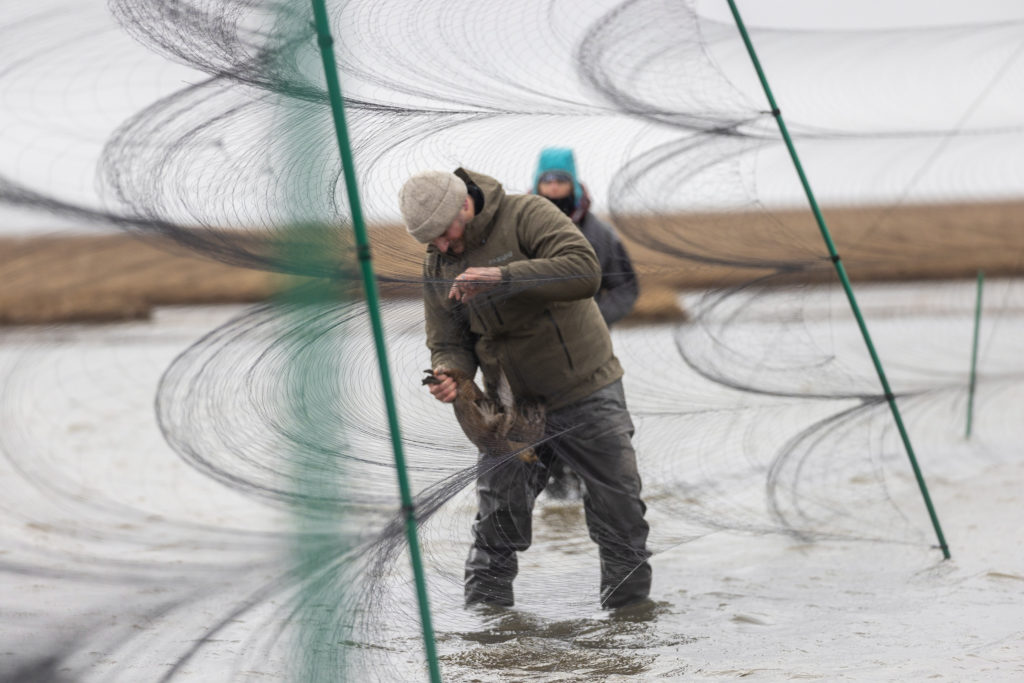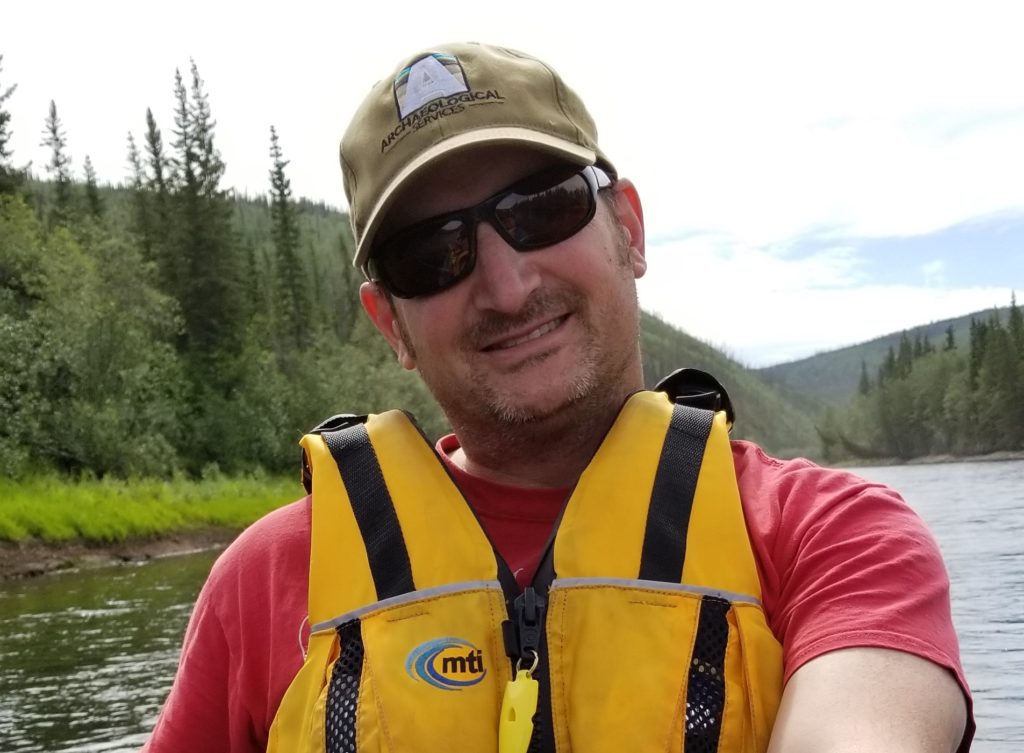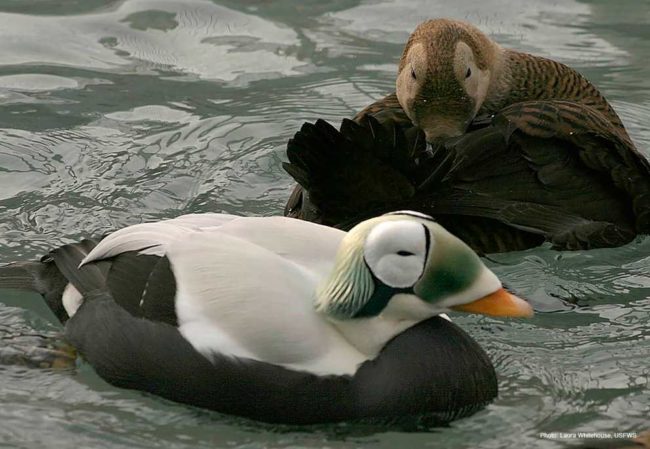Presented by Dan Rizzolo, Endangered Species Biologist.
Tuesday, April 18, 5 p.m. – 6 p.m. AKDT
Dan’s presentation was recorded. Watch below:
Spectacled eiders were in rapid decline in the Yukon Delta National Wildlife Refuge in 1993 when they received the protection of the Endangered Species Act by being listed as a Threatened species. They were a mystery then. Western science knew very little about this sea duck species with the spectacled plumage. We knew they made their nests in the coastal tundra along the Bering Sea and Arctic coasts of Alaska and Siberia, but not where they molted their feathers or spent the winter. How many were there? What did they eat? And, importantly, why were they in such rapid decline? In the 30 years since they were listed, we have learned much about this tough duck that winters among the pack ice in the Bering Sea. In this 50th anniversary year of the Endangered Species Act, join us for Dan’s review of what has been learned since listing, including how spectacled eiders are responding to changes in sea ice in the Bering Sea. But knowledge does not always bring recovery and with ongoing anthropogenic climate change, the spectacled eider continues to face an uncertain future.
 Dan, Mist Netting birds on the river. pc Mark Lindberg
Dan, Mist Netting birds on the river. pc Mark Lindberg
Dan Rizzolo is a wildlife biologist who works with a great team of biologists and support staff in the Endangered Species Recovery program of the U.S. Fish and Wildlife Service, based in Fairbanks. He found his way to Alaska from the east coast for a summer job after finishing his undergraduate studies and has remained in the Great Land since, working as a biologist throughout the state, primarily with birds. Dan enjoys spending time in remote areas of Alaska, both for work and for play. In Fairbanks, you will often find him pedaling his fat tire bike up O’Connor Creek trail, or at local ice rinks cheering on his favorite hockey players, his wife Adrian and son Gavin.

